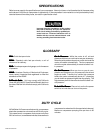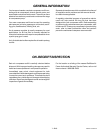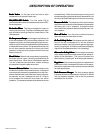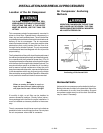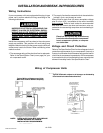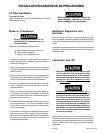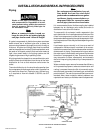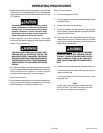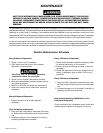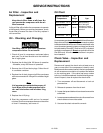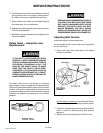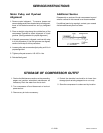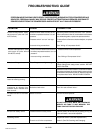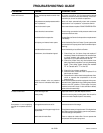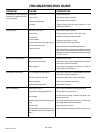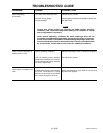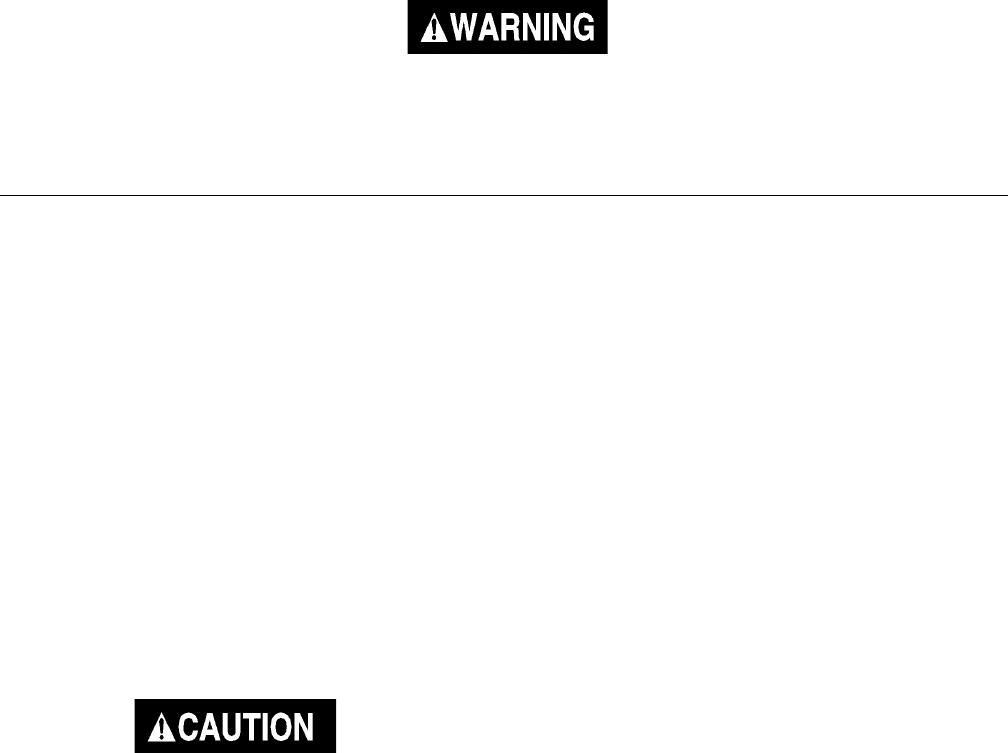
14—ENG
MGP-SL10120H-2A
MAINTENANCE
UNIT CYCLES AUTOMATICALLY WHEN POWER IS ON. DURING MAINTENANCE, YOU COULD BE
EXPOSED TO VOLTAGE SOURCES, COMPRESSED AIR OR MOVING PARTS. PERSONAL INJURIES
CAN OCCUR. DISCONNECT POWER SOURCE AND BLEED OFF ALL AIR TANK PRESSURE BEFORE
DOING ANY MAINTENANCE OR REPAIR. NEVER OPERATE THE UNIT WITH THE BELT GUARD
REMOVED.
To ensure efficient operation and longer life of the air compressor outfit, a routine maintenance schedule should be
prepared and followed. The following routine maintenance schedule is geared to an outfit in a normal working environment
operating on a daily basis. If necessary, the schedule should be modified to suit the conditions under which your
compressor is used. The modifications will depend upon the hours of operation and the working environment. Compressor
outfits in an extremely dirty and/or hostile environment will require a greater frequency of all maintenance checks.
A clean air compressor runs cooler and provides longer service. Clean or blow off fins and any other parts of the air
compressor that collect dust or dirt. Do not place rags, containers or other material on or against the ventilation openings
in the belt guard. Adequate ventilation is necessary to maintain proper air compressor operating temperature.
Routine Maintenance Schedule
Every 160 Hours of Operation
1. Check drive belt tension; adjust if necessary. (Refer
to Service Instructions in this manual.)
2. Inspect air lines and fittings for leaks; correct as
necessary.
3. Check the alignment of the motor pulley to the fly
wheel. If necessary, align to within 1/32 inch on
centerline.
Every 300 Hours of Operation
1. Drain and refill compressor crankcase with clean
oil. Refer to Service Instructions for recommended
oils.
2. Increase frequency of oil changes if humidity or
operating conditions are extreme.
Each Year of Operation (2000 Hours or if a
Problem is Suspected)
Check condition of air compressor pump intake and
exhaust valves. Replace if damaged or worn out.
Every 8 Hours of Operation
1. Check oil level. Add if necessary.
2. Drain water from the air tank, any moisture
separators or transformers.
3. Check for any unusual noise and/or vibration.
4. Manually check all safety valves to make sure they
are operating properly.
5. Inspect for oil leaks and repair any leaks found.
6. Clean and inspect the air intake filter; replace if
necessary.
First 100 Hours of Operation
1. Drain and refill compressor crankcase with clean
oil. Refer to Service Instructions for recommended
oils.
2. Increase frequency of oil changes if humidity or
operating conditions are extreme.
Every 40 Hours of Operation
1. Inspect condition of drive belt; replace if
necessary.
Overfilling with oil will cause premature
compressor failure. Do not overfill.



